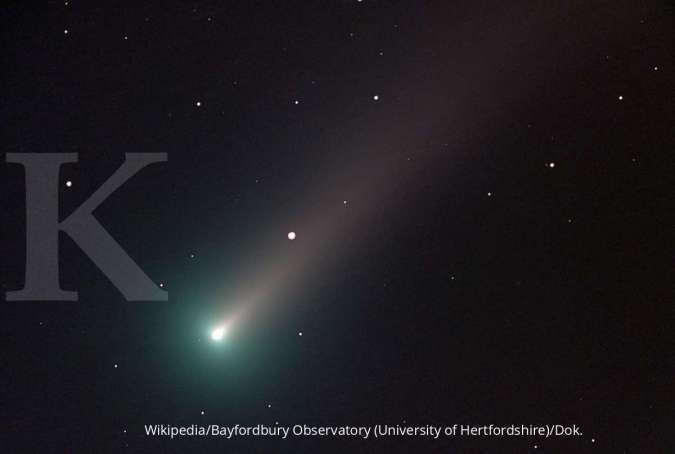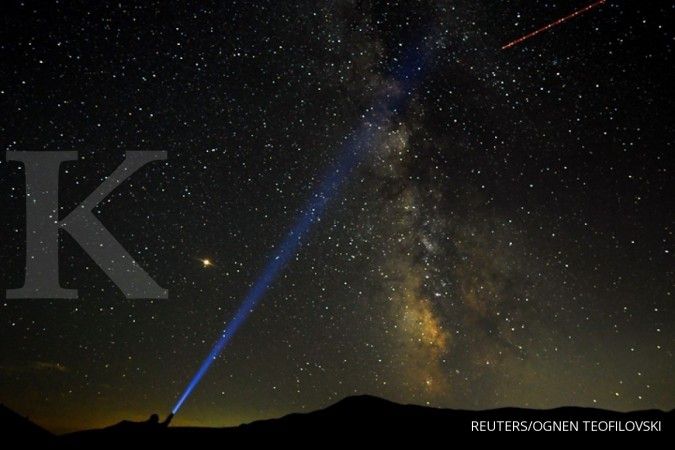KONTAN.CO.ID – Here are 7 celestial bodies in the Solar System, complete with explanations. Are the sun, planets, moons, meteors and so on including celestial bodies? Let’s find out more here.
Some people may find it easier to recognize objects on the Earth’s surface. Whether it’s a living thing or an inanimate object.
Yes, because these objects are all around us and we can find almost every day. What about celestial bodies? Can you see all the objects in the sky?
Although some celestial bodies can be seen with the naked eye, maybe some of them you have never seen before. This is because some celestial bodies can only be seen using tools, such as space telescopes.
Talking about celestial bodies, in the Solar System itself there are several celestial bodies floating in space. Just so you know, the Solar System is also a collection of celestial bodies consisting of a star called the Sun and all objects that are bound by its gravitational force.
Including the Sun, planets, meteors, asteroids, and much more. Let’s find out more about the celestial bodies in the Solar System below.
1. Sun
The sun is a celestial body that is the parent star of the Solar System and is the main component in this system. The shape of the celestial body at the center of the Solar System is almost spherical and consists of hot plasma mixed with a magnetic field.
The diameter of the Sun is known to reach 109 times larger than Earth.
2. Planet
A planet is a celestial body or astronomical object orbiting a star. As is known, we know 8 planets in the Solar System.
The planets in the Solar System are divided into inner and outer planets, as follows.
Inner planets:
- Mercury
- Venus
- Earth
- Mars
Outer Planets:
- Jupiter
- Saturn
- Uranus
- Neptune
The difference between the inner and outer planets is their constituent parts or composition. Generally, the inner planets have a dense rock composition, have almost no or no satellites and have no ring system.
While the outer planets contain large amounts of hydrogen and helium, such as Jupiter and Saturn. On the other hand, Uranus and Neptune have a larger proportion of ice.
This collection of outer planets, also known as gas giants, all have rings, although only Saturn’s ring system can be easily seen from Earth.
Also Read: This is the Largest Solar Eruption Captured by the Solar Orbiter Satellite
3. Comet

These celestial bodies called comets are also part of the Solar System. Comets are small bodies in the Solar System, generally a few kilometers across, and are made of volatile ice.
Comets also have easily recognizable characteristics, this one celestial body has a distinctive tail.
4. Asteroid
In the Solar System, there is the Asteroid Belt which lies between the orbits of Mars and Jupiter. This asteroid belt is the gathering place for thousands of tau even millions of celestial bodies consisting of igneous rock and metal minerals.
5. Meteoroid
Celestial objects called meteoroids are small objects in the solar system that are smaller in size than asteroids but larger than a molecule.
According to the International Astronomical Society at the IX 1961 general conference, a meteoroid is defined as a solid object that is/moves in interplanetary space, with a size smaller than an asteroid and larger than an atom or molecule.
Also Read: The Phenomenon of Day Without a Shadow of the Sun (February 21 – April 5), Here’s How to See It
6. Star
Stars are one of the celestial bodies that we can see with the naked eye. The definition of a star is a celestial body that emits light.
No wonder, every night we can see objects in the sky that shine. There are two kinds of stars, namely pseudo stars and real stars.
Pseudo stars are stars that do not produce their own light, but can reflect light received from other stars. Meanwhile, real stars are stars that can produce their own light.
7. Meteor

A meteor is the appearance of the path of a meteoroid falling into Earth’s atmosphere. This celestial object is often referred to as a shooting star.
Celestial objects called meteoroids are small objects in the solar system that are smaller in size than asteroids but larger than a molecule.
According to the International Astronomical Society at the IX 1961 general conference, a meteoroid is defined as a solid object that is/moves in interplanetary space, with a size smaller than an asteroid and larger than an atom or molecule.
The appearance of this path is due to the heat generated by the ram pressure (not by friction) as it enters the atmosphere.
Thus the 7 celestial bodies in the Solar System, complete with explanations. Hopefully this celestial object-themed content or article can add to your knowledge about astronomy.
Find interesting information about astronomy, technology, and other interesting content at Kontan.co.id.
–


